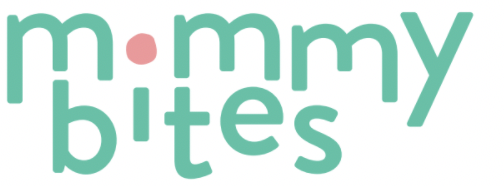
Everything begins with a story . . . stories can help show the way – the way to transformation of consciousness – thinking in one way and now thinking in another way.
Stories are psychological therapy . . . seeking harmony and balance through stories . . . Everything begins with a story. (Joseph Campbell, The First Storytellers)
Dear Readers,
In this column I deviate from my usual format to talk about – as you may have surmised from the Joseph Campbell quotation – stories. My back story is that each of three good friends of mine has recently published a book that has to do with stories. It is my pleasure to share my friends’ books with you.
Life Is Full of Sweet Spots: An Exploration of Joy, Mary O’Connor
Mary O’Connor’s Blog: Mary provides beautiful photographs, poems and other examples of “sweet spots” every week.
Mary uses stories to nurture – nurture ourselves and others. She offers anecdotal and research-based narratives that awaken and express joy, and she makes it accessible to each of us. Using a mix of people, each contributor relates an engaging, uplifting and personal story of how and where he or she personally found relief, fulfillment or simple contentment in life.
For example, there are the stories of two parents who each lost a child, one to cancer, one to the 9/11 attacks, both of whom found joy by doing for others in loving memory of their children. There is the father who had a second chance at fatherhood and found joy by helping ex-felons and at-risk men become engaged fathers and citizens.
Readers will get to know the mom who was going through a rough patch in her life, found relief through photography and making her family’s life as simple as possible, and came to understand that her path to joy “. . . wasn’t about the big things. It was about the small things.” A smile is assured while reading about the woman who helps people commune with nature and find peace by floating in the water with the dolphins: “The dolphin has a joyfulness, a playfulness in experiencing humans . . . [people] just go into the sensations of feeling, which is a big part of a dolphin’s life.”
There are 40 stories by artists, writers, gardeners, educators, parents, grandparents, and others, each with a story that informs and inspires.
As Mary explains, the stories her contributors share are reminders that “Life is absolutely full of opportunities for meaningful happiness, replete with places of joy, ways of realizing it . . . of how life’s beauty and powers make us inwardly hum, how gardening or stargazing, touching something wild, listening to the sounds of silence, learning and loving, just simply being, all feed our emotional well-being and craving for joy.”
Mary’s captivating and exquisitely-written book helps each of us “to learn from stories and prescriptions of such things as walks in the woods and journeys to places unknown and set about making them our own.” I suspect every reader of Life is Full of Sweet Spots will inevitably be asking herself or himself: “What would my own story about joy be if Mary asked me to be a contributor?” From reading Mary’s book I found joy in contemplating my own joy, as well as that of others.
The Career as a Path to the Soul, Stories and Thoughts about Finding Personal Meaning in Life and Work, David Rottman
David creates stories for personal reflection, illumination and growth: how to find the ways a path to the soul is achieved, “a way of living in meaningful connection to something greater than our bounded sense of ourselves . . . A path to the soul gives a direction that points to how and where further development needs to take place and where there is a promise of a more creative way of living. Asking about the nature of the path, and its goal, is the first step in constructing a path to the soul.”
By having fictitious characters “talk with their therapist” — in effect, tell their stories — David is able to share his considerable expertise in psychology and human motivation in ways that are relatable, compelling, and instructive. Through this literary device of talking with a therapist, each character is guided to discover, often with a great deal of effort and pain, his or her own higher purpose.
For example, there is Ron who begins his first session by stating, “I need the job that is absolutely right for me.” He had tried a couple of things he thought would fill this need, but, for a variety of reasons, was crushed to learn he will not be able to pursue them. He feels helpless, hopeless, overcome with despair. Through dialogue with his therapist, he has his aha! moment: “I know I have something I want to give. I want to be able to help people, I want to do something that matters,” but before he could act on this desire, it “meant temporarily sacrificing the pursuit of his immediate goal, a meaningful job, for the pursuit of self-understanding and self-acceptance,” both of which he was able to achieve with the guidance of his therapist.
Then there is the story of Jane, who totally bottomed out when she was laid off from her decades-long, administrative job of working for the corporate powers that be, a job that defined her self-image and was the very core of her being. Her devastation left her isolated, barely able to function, and at her physician’s urging, she met with a therapist.
Jane’s transforming insight came with her realization that “she had been expressing her desire to make work into a worshipping experience, but in a way that proved hollow and distorted. Her previous way of worshipping the company and its “gods,” the bosses at work, had been “profane;” it was really serving the “gods” of prestige and one-up-manship.”
Armed with this insight and by examining the truth about her relationship with her deceased mother, “This common human experience — of grief and isolation — that formerly scared and disgusted Jane, now became a door that she learned how to open, to reach others. An entirely new aspect of her personality had been created, a new chamber of the heart, one that reacted with compassion and closeness to the isolation of others.”
All seven of the stories David tells via the back-and-forth dialogue between the characters and the therapist inform and propel the reader forward on his or her own journey for those who want his or her career to be a path to the soul.
Speak Like Yourself . . .No, Really! Follow Your Strengths and Skills to Great Public Speaking, Jezra Kay
Jezra Kaye’s Blog: Jezra publishes a monthly newsletter with thoughtful and easy-to-apply presentation tips.
Jezra’s book will give you the confidence and skills you need to tell your story effectively, be it for a presentation at work, for an organization you’ve joined, preparing for an interview, or at a more personal gathering, such as a networking or a book club meeting. Wherever and whenever you want to make a strong and memorable impact using yourself as the vehicle, Speak Like Yourself will give you realistic, step-by-step instructions.
In addition to using humor, Jezra’s book is visually easy to read and comprehend: its large fonts; effective use of bold print; delightful illustrations; shaded boxes with reminders; summaries of main points; and content “take-aways” at the end of each chapter. Included in the many additional resources at the end of the book, Jezra provides an instant speech framework that pulls together all the do’s and don’ts that have been presented.
It is telling that all the reviewers of Jezra’s book on Amazon give it the highest rating possible, my own included. For example, one reviewer writes: “Jezra Kaye’s book about public speaking is filled with practical advice that is delivered in a way that’s immensely enjoyable to read. I actually consider myself someone who is adept at public speaking — I’ve taught at several colleges, and don’t generally feel ill at ease when speaking to strangers, and still found this book to have new insights that will be useful for me going forward.”
Another writes: “I found some real nuggets of powerful information that I believe can transform anyone into a confident, poised speaker. I really enjoyed the book and would recommend it to anyone, not just people who speak. It can help with every aspect of human contact, from getting a job, public speaking, to talking your way out of a ticket, to parent-teacher conferences, to getting into college. This book is filled with advice on how to handle your own voice so the world hears the message you intended. Very powerful!”
Ask Dr. Gramma Karen is published every other Tuesday.
E-mail queries to [email protected]
Like what you read? Sign up for our free newsletter so you can be informed of the latest FREE webinars & teleclasses, parenting articles, & weekly raffles.
The views and opinions expressed on this blog are purely the blog contributor’s. Any product claim, statistic, quote or other representation about a product or service should be verified with the manufacturer or provider. Writers may have conflicts of interest, and their opinions are their own.




Comments are closed.